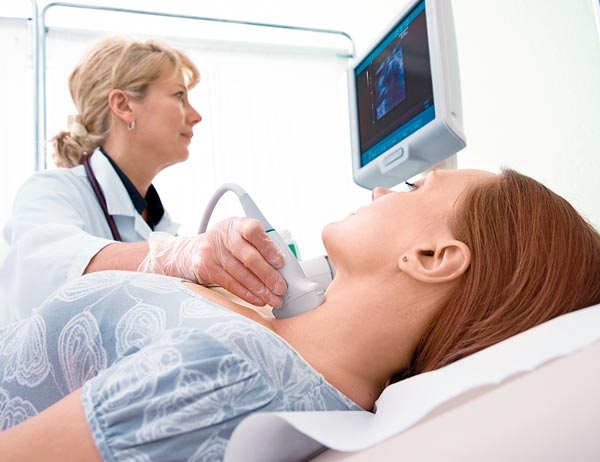Hanna Saadeh - The Annual Pelvic Examination
In this spirit, the traditional, annual pelvic examination was taken to the test to see if its benefits outweigh its harms. The traditional pelvic examination is performed in four parts. The first part is to inspect the external genitalia for ulcers, erosions, cancers, warts, and signs of inflammation or menopause. The second part is the speculum examination, which exposes the cervix for inspection and for obtaining the Pap smear. The third part is the bimanual examination where the operator palpates the ovaries, uterus, tubes, colon, bladder, etc. The fourth part is the examination of vaginal secretions under the microscope and obtaining samples to be tested for sexually transmitted diseases, most of which can now be done through self-collected swabs.
For symptomatic women, the pelvic examination is mandatory and has a high diagnostic yield. But how about asymptomatic women? Does it make sense to look for disease in women who feel well and are not at risk for cancers or sexually transmitted diseases? Do these women need an annual, complete pelvic examination, in spite of its inconvenience, unpleasantness, cost, and potential harms?
The potential harms are obvious and include anxiety, embarrassment, discomfort, pain, false positive results, over diagnosis, over treatment, false reassurance, and procedural injuries. Such harms, which occur in at least a third of all women, are also a common reason for avoiding female health checkups, and that avoidance, itself, can also lead to harmful consequences.
The benefits, on the other hand, are not as obvious. One clear benefit is the Pap smear, which was discussed in the March issue under Cervical Cancer Screening. However, for most asymptomatic, monogamous, low risk women, the Pap smear is currently recommended only every three years if done alone, and every five years if combined with the Human Papilloma Virus check. Do these asymptomatic women, who are not at risk of sexually transmitted disease or gynecologic cancers and who have no special needs, do they still need annual pelvic examinations during the 3-5 year intervals between Pap smears? Based on a recent American College of Physicians study by Bloomfield et.al.* the answer seems to be no.
Moreover, doing a bimanual examination, even when obtaining a Pap smear, has also been deemed unnecessary and harmful. The harm comes from the discomfort and pain caused by the bimanual examination, and from findings that may provoke further studies and surgeries. The idea of screening for ovarian cancer by doing bimanual examination has been shown to be futile by studies, which essentially tell us that in spite of modern scientific advances, we still do not have a reliable screening test for ovarian cancer. Even screening with pelvic ultrasound, which is much more sensitive than the bimanual examination, has failed to reduce ovarian cancer deaths.
Is the pelvic examination necessary before providing hormone contraception? The answer is again no, especially that having a prerequisite pelvic examination my scare some women away from seeking hormonal birth control methods, which exposes them to the risks inherent in unwanted pregnancies.
Since women younger than 21, older than 65, or those who have no cervix, do not need Pap smears if they are at low risk of cervical cancer, do these women need annual, screening pelvic examinations if they are asymptomatic and have no special needs? The answer is again no.
Overweight women view the screening pelvic examination with more embarrassment and dread, which causes them to delay or avoid health care altogether. Such a notion would not present a barrier to health care if overweight women knew that a screening pelvic examination is not a necessary part of their primary health care visit.
In conclusion, evaluation of the benefits and harms of screening pelvic examinations in non-pregnant, asymptomatic women who are not at increased risk of sexually transmitted diseases or gynecologic cancers shows that the harms outweigh the benefits. In spite of that, many physicians still believe that the screening pelvic examination is a necessary component of the annual health care visit. It will take time to change such deeply entrenched attitudes, unless women become proactive and, armed with this new knowledge, verbalize their personal preferences to their physicians.
Voltaire is known to have said: “I love the man who seeks truth but hate the man who claims to have found it.” In this context, we need to keep an open mind, submit to new evidence even if it goes against our beliefs, and be willing to change our attitudes, again and again, each time the evidence changes. Clinging to our dogmas or claiming to have found the absolute truth is a slippery slope whose harms far outweigh its benefits.








Leave A Comment